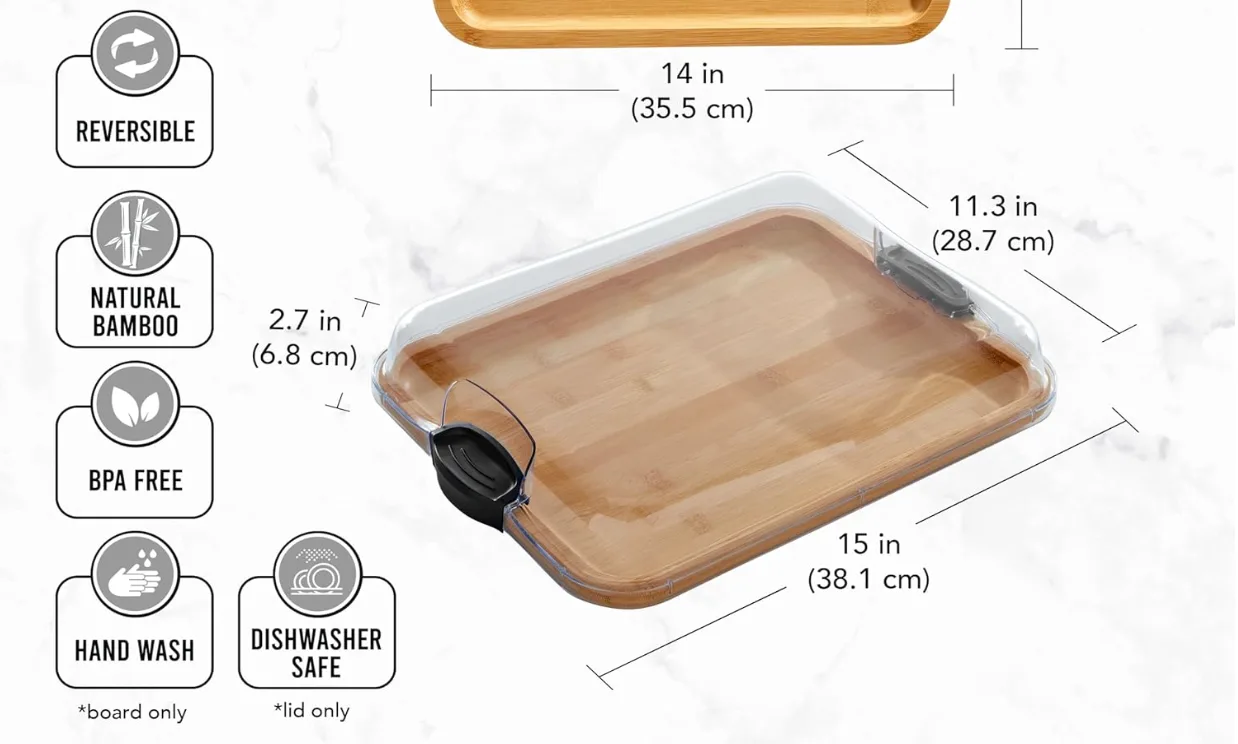Consumers Best Verdict: Farberware Highlights
The farberware bamboo cutting board is designed for everyday chopping—produce, cheeses, sandwich prep—and it’s usually sold as a single board or in affordable multi-board sets. Bamboo’s naturally renewable, resists moisture better than many soft woods, and cleans up quickly. With sensible care (hand-wash, quick dry, occasional oil), it should serve you well through regular, real-life kitchen use.
Look, if you want a wallet-friendly board that doesn’t feel flimsy, the Farberware bamboo cutting board hits a sweet spot. It’s light, stable enough for daily prep, gentle on knives compared to glass or stone, and it looks clean on the counter. It’s not a forever, heirloom piece—but for the price, it punches above its weight, which is why we’re comfortable recommending it.
In-Depth Look: Farberware Features & Considerations
Core Features & Consumer Benefits
Here’s what stood out in day-to-day slicing, dicing, and, yes, a little snack plating between meals.
Renewable bamboo construction
Feels sturdy yet lighter than many hardwood boards, with a smaller environmental footprint.
Knife-friendlier surface
Bamboo’s fine grain is smoother than plastic’s rougher texture, helping your edges last longer (still, always use sharp knives).
Budget-smart value
Farberware keeps pricing accessible—great for first apartments, dorms, or simply expanding your board lineup without overspending.
Low-fuss maintenance
Hand-wash, dry upright, and oil once in a while; it cleans fast and doesn’t hog counter space.
Versatile formats
Commonly available as singles or multi-piece sets; some versions include cut-out handles or juice grooves for easy lifting and neater carving.
Important Considerations & Potential Downsides
- Not dishwasher-safe
Heat and steam can warp or separate laminated bamboo layers—hand-wash only.
- Needs periodic oiling
Without mineral oil/board cream, bamboo can dry out and feel rough or crack at the edges over time.
- Harder than end-grain wood
Bamboo is relatively hard; compared with premium end-grain maple, you may see slightly faster knife dulling.
- Protein prep caution
You can use it for raw meat if you sanitize well, but many cooks prefer a dishwasher-safe plastic board to simplify cross-contamination control.

Who Is the Farberware Best For?
Budget-minded cooks
You want a reliable daily board without spending premium-wood money.
Apartment and dorm kitchens
Compact, light, and easy to stash—great when space is tight.
Meal-prep enthusiasts
Grab a multi-board set to separate produce, proteins, and ready-to-eat items.
Gift givers
Practical, attractive, and affordable—an easy add to a kitchen starter kit.
Eco-conscious shoppers
Bamboo is a fast-growing, renewable material that feels like a smart swap.
Who Might Want to Explore Other Options?
- Dishwasher-or-bust users
If you won’t hand-wash, a plastic board that can handle high heat is safer.
- Knife purists with pricey blades
End-grain maple or walnut will be gentler on ultra-fine edges.
- Butcher-level tasks
Heavy cleavers and bone work are better suited to thicker, end-grain or rubber boards.
- Juice-heavy carving
If you regularly carve roasts, look for a dedicated board with deep, full-perimeter grooves.











